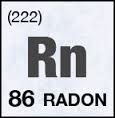 In the last few days dozens of articles have suggested a causal link between fracking and an increase in radon levels in homes in Pennsylvania. Headlines range from conservative as USA Today’s article – “Study suggests fracking could release radon from ground” and CBS News with a question “Is fracking causing a spike in radon levels?” to inflammatory headlines from liberal activists stating that a link between fracking and rising levels of radon gas in homes near fracking sites has been established based on a study published yesterday in Environmental Health Perspectives.
In the last few days dozens of articles have suggested a causal link between fracking and an increase in radon levels in homes in Pennsylvania. Headlines range from conservative as USA Today’s article – “Study suggests fracking could release radon from ground” and CBS News with a question “Is fracking causing a spike in radon levels?” to inflammatory headlines from liberal activists stating that a link between fracking and rising levels of radon gas in homes near fracking sites has been established based on a study published yesterday in Environmental Health Perspectives.
Radon is a chemical element with symbol Rn and atomic number 86. It is a radioactive, colorless, odorless, tasteless[2]noble gas, occurring naturally as an indirect decay product of uranium or thorium.
In fact no such link was found by the study. The authors say they focused on Pennsylvania because it has one of highest residential radon levels in the country, and because the state has a huge, detailed database of home radon measures. They found that levels in some sites had risen since 2004, which is the date they claim fracking started to increase, however there is no controlled analysis of claim. The authors state the study is a preliminary “first look” into a “possible connection” between fracking and radon.
The fact that they were looking for a link is not proof of a link. According to USA Today, coauthor Brian Schwartz, a professor of environmental health sciences at the Johns Hopkins Bloomberg School of Public Health in Baltimore notes that it’s possible that something other than fracking caused home radon levels to rise. For example, homes may have become more energy efficient since 2004. Although well-insulated homes save energy, they can also trap radon inside, he says. In other words it is not a well controlled study and hardly establishes a scientific link with anything.
According to the story in USA Today the authors acknowledge that their findings conflict with those of a January study from Pennsylvania’s Department of Environmental Protection, which reported that “there is little potential for additional radon exposure to the public due to the use of natural gas extracted from geologic formations located in Pennsylvania.”
One thing very striking is that they found that areas with low fracking activity had lower radon levels than areas with no nearby fracking at all. So depending on which data subset you use there is a correlation or anti-correlation of radon levels with fracking activity. In fact, the Reading Prong region – which includes Berks, Lehigh and Northampton Counties, where no drilling activity occurs – had the highest recorded indoor radon levels.
The far left media reports on this have been Out of Touch with science and logic claiming a causal link that is only found by data dredging to find patterns that agree with their opinions. When a new smaller uncontrolled study conflicts with a much more intense controlled study then the new study should be suspect until further work is done. Just the mention of someone doing a study to look for a link between fracking and environmental problem is enough to convince anti-fracking zealots that the problem is real.
We believe further studies may show a link, but the recent study is too poorly designed to be used for establishing a causal relationship between fracking and radon levels in nearby homes.


Leave A Comment